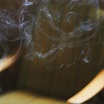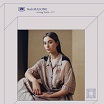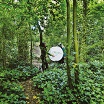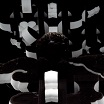johanna orellana: las camelias, tres esquinas
Flautist Johanna Orellana teams up with Carmen Villain for a collection of horizontal, pastoral field recordings and close mic-ed flute sounds that zero in on the instrument's unstable resonance and levitational magic. There's no cringe virtuoso business or fourth world firewalking here - just sonic purity, sublime minimalism and the precise capture of time, place and poetry. Huge recommendation if yr into Debit, Joanna Brouk, Bendik Giske, Mary Jane Leach. The flute's a uniquely misunderstood instrument that rarely gets the attention it deserves, so it’s been a rare treat to hear it explored and captured in a way that challenges our preconceptions. You might have come across Johanna Orellana before if you've listened to Carmen Villain's music (or seen her perform live), and Villain appears here in a producer's role, using her engineering expertise to impart a level of restraint and sonic fidelity that's quite startling. There are only really two central elements to the album: environmental recordings and flute. There’s no psychedelic delay, no cavernous reverb; no audible treatments at all - Orellana and Villain instead force us to consider the flute and its musical lineage. 'El Jardín I' introduces the instrument as a physical conduit; Orellana allows her breath to distort the sound - the padded pat pat of the keys forms a kind of rhythm, closely recorded so it's amplified and jarring, linking to primal wind instruments like conch shells, bamboo flutes and wooden whistles. Recalling the way in which Debit interfaced with the ancient world using AI-assisted tech on last year’s ‘The Long Count’, Orellana uses a comparatively modern contemporary transverse flute, an instrument with roots that stretch back through the baroque era, into Medieval Europe, back to the Byzantine era and into Asia. The component that connects the instruments and eras is breath, and its amplification and modification through differently shaped pipes and vessels. To accompany these sounds, Orellana lets the environment sing: insects, rushing water and zephyr-like winds form a stage that presents her mortal energy, suggesting a harmony between our use of breath and its environmental ubiquitousness. Her technique is steeped in folk history and decouples itself from expectation by rooting itself in nature. It allows her to bridge the gap between equal temperament and less ordered (less commercially-focused) microtonality without overstating the concept. Other sounds waft in from the sidelines; what might be an Indian bansuri, stray notes, a gust of air. More familiar sounds emerge on 'El Jardín II', allowing lengthy tones - each with their own wavering rhythm - to slow dance around themselves. She sets recognisable flute sounds against more abstract wails that gradually overwhelm the track's brief finale. On 'El Jardín III', Orellana traverses the most familiar path of all, using the flute to ring out a simplistic melody that almost sounds like a classic Oliver Postgate TV theme. All these elements are brought together on 'El Jardín IV’, a poetic overview of the instrument that connects a constellation of musical nodes. There's a link to the foundational new age recordings that Joanna Brouk made with Maggi Payne back in 1980, but Orelanna also absorbs the outdoor folk magic of Fonal or Stroom, and the improvisational grist of Bendik Giske or legendary US horn duo Nmperign. On the album's extended closer 'San Fabián', she carries haunted whistling sounds across pin-prick breath tones that spiral into gusty sonic whirlwinds, suggesting a soft power that's as controlled and capable as it is instinctual. It’s a stunning finale to a stark and deeply immersive album we urge you to spend some time with.
You might also be interested in...





